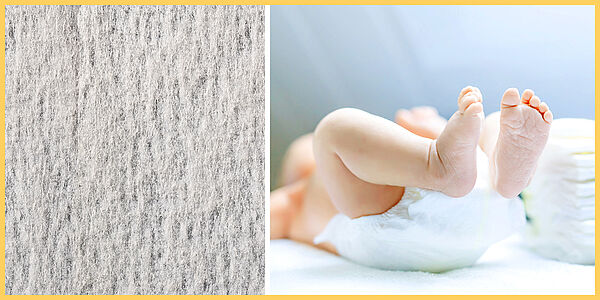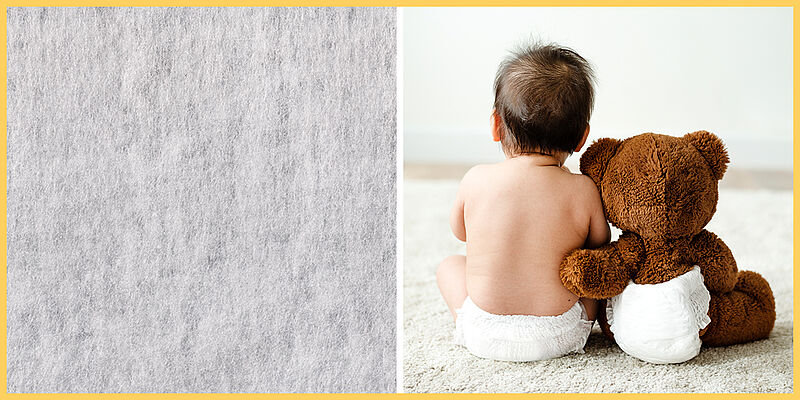Flexible lines for hygiene nonwovens
The rapidly growing market for absorbent hygiene products mainly includes nonwovens that are used in baby diapers and incontinence products.
Line characteristics:
Typical web weights: 15 to 100 gsm
Fibers: PP/PE, PET/Co-PET bicomponent fibers
Output: more than 14,000 tons/year
(depending on fiber type, web weight and working width)
Typical end products: top sheet and ADL (acquisition/distribution layer) in diapers
Thermofusion (thermobonding) with hot air
The prerequisite for thermofusion or thermobonding processes is the addition of man-made fibers with a low melting point or bicomponent fibers to the fiber blend. When part of the filbers melt in the oven, they glue the surrounding fibers together.
The result is such diverse end products as fluffy, very soft top sheets or large-pored, flexible ADL nonwovens.
The key component is an omega thermobonder based on the air-through principle.
Chemical bonding with foulards
Chemical or binder bonding takes place by applying binders to the unbonded web. When drying the liquid or foam-based chemical binders glue the surrounding fibers together.
Key components are, on the one hand, the applicator, which apply the binding liquid or foam evenly to the surface of the web. Several drying components follow. First, the web transits a can dryer, then an Omega dryer and finally a hot flue, a dwelling compartment


